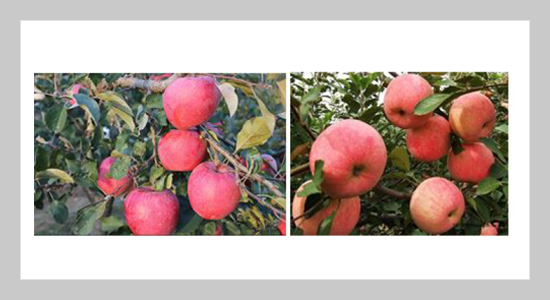REFERENCES
- [1]Yin S, Zhang Y, Karim S. “Large Scale Remote Sensing Image Segmentation Based on Fuzzy Region Competition and Gaussian Mixture Model”, IEEE Access, Vol. 6, pp:26069-26080. (2018) doi: 10.1109/ACCESS.2018.2834960
- [2]Teng L, Li H, Yin S. “Modified pyramid dual tree direction filter‐based image denoising via curvature scale and nonlocal mean multigrade remnant filter”, International Journal of Communication Systems, (3):e3486. (2017) doi: 10.1002/dac.3486
- [3]Lin Teng, Hang Li, Shoulin Yin, Yang Sun. “Improved krill group-based region growing algorithm for image segmentation”, International Journal of Image and Data Fusion. (2019). doi: 10.1080/19479832.2019.1604574
- [4]Wang P, Dong X, Qiang Z, et al. “The Auto-Obtaining of the Knowledge about Developing Hailstone Weather”, International Conference on Fuzzy Systems and Knowledge Discovery. IEEE, pp:394-399 (2007). doi: 10.1109/FSKD.2007.564
- [5]Fei Z, Guo J. “A new hybrid image segmentation method for fingerprint identification”, IEEE International Conference on Computer Science and Automation Engineering. IEEE, pp:382-386 (2011). doi: 10.1109/CSAE.2011.5952702
- [6]Lin Teng, Hang Li. “CSDK: A Chi-square Distribution-Kernel method for Image De-noising Under the IoT Big Data Environment”, International Journal of Distributed Sensor Networks. Vol. 15, No. 5 (2019). DOI: 10.1177/1550147719847133
- [7]Lin Teng, Hang Li, Shoulin Yin, Shahid Karim&Yang Sun. “An active contour model based on hybrid energy and fisher criterion for image segmentation”, International Journal of Image and Data Fusion. 2019. doi: 10.1080/19479832.2019.1649309
- [8]Shoulin Yin, Lei Meng and Jie Liu. “A New Apple Segmentation and Recognition Method Based on Modified Fuzzy C-means and Hough Transform”, Journal of Applied Science and Engineering. Vol. 22, No. 2, pp. 349-354, 2019.
- [9]Kuang H, Liu C, Chan L L H, et al. “Multi-class Fruit Detection Based on Image Region Selection and Improved Object Proposals”, Neurocomputing, vol 283, 241-255, 2018. doi: 10.1016/j.neucom.2017.12.057
- [10]Jeng-Shyang Pan, Junbao Li and Zheming Lu. “Adaptive Quasiconformal Kernel Discriminant Analysis”, Neurocomputing, Vol. 71, No. 13-15, pp. 2754-2760, 2008. doi: 10.1016/j.neucom.2007.10.003
- [11]Hang Li, Lin Teng and Shoulin Yin. “A New Bidirectional Research Chord Method Based on Bacterial Foraging Algorithm”, Journal of Computers (Taiwan). v 29, n 3, p 210-219, June (2018). doi: 10.3966/199115992018062903020
- [12]Yin Shoulin, Liu Jie, Teng Lin. “A new krill herd algorithm based on SVM method for road feature extraction”, Journal of Information Hiding and Multimedia Signal Processing, v 9, n 4, p 997-1005, July (2018).
- [13]Yin Shoulin, Liu Jie, Li Hang. “A Self-Supervised Learning Method for Shadow Detection in Remote Sensing Imagery”, 3D Research, v 9, n 4, December 1, (2018). doi: 10.1007/s13319-018-0204-9
- [14]Moreno R, Graña M, Ramik D M, et al. “Image Segmentation on the Spherical Coordinate Representation of the RGB Color Space”, Iet Image Processing, Vol. 6, No. 9, pp:1275-1283 (2018). doi: 10.1049/iet-ipr.2011.0634
- [15]Zhang K, Zhang L, Lam K M, et al. “A Level Set Approach to Image Segmentation With Intensity Inhomogeneity”, IEEE Transactions on Cybernetics, Vol. 46, No. 2, pp:546-557 (2017). doi: 10.1109/TCYB.2015.2409119
- [16]Li, Zhikui Chen, Laurence T. Yang, Liang Zhao, Qingchen. Zhang. “A Privacy-preserving High-order Neuro-Fuzzy c-Means Algorithm with Cloud Computing”, Neurocomputing, vol. 256, pp. 82-89 (2017). doi: 10.1016/j.neucom.2016.08.135
- [17]Keshtkar F, Gueaieb W, Masud M. “Knowledge-based Image Segmentation Using Swarm Intelligence Techniques”, International Journal of Innovative Computing & Applications, 4:75-91. (2012) doi: 10.1504/ijica.2012.046779
- [18]Yin S, Zhang Y. “Singular value decomposition-based anisotropic diffusion for fusion of infrared and visible images” International Journal of Image and Data Fusion, vol 9, issue 4, pp:146-1 (2018) doi: 10.1080/19479832.2018.1487886
- [19]Jian M, Jung C. “Interactive Image Segmentation Using Adaptive Constraint Propagation”, IEEE Transactions on Image Processing, Vol. 25, No. 3, pp:1301-1311 (2016). doi: 10.1109/TIP.2016.2518480
- [20]Medeiros R S, Scharcanski J, Wong A. “Image segmentation via multi-scale stochastic regional texture appearance models”, Computer Vision & Image Understanding, Vol. 142, pp:23-36 (2016). doi: 10.1016/j.cviu.2015.06.001
- [21]Hussain M K , Sufyan M , Ali Q M , et al. “Kernel Possibilistic Fuzzy c-Means Clustering with Local Information for Image Segmentation”, International Journal of Fuzzy Systems, 21, no. 1, pp. 321–332, 2019. doi: 10.1007/s40815-018-0537-9









